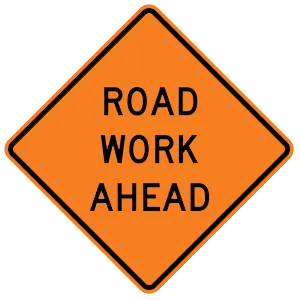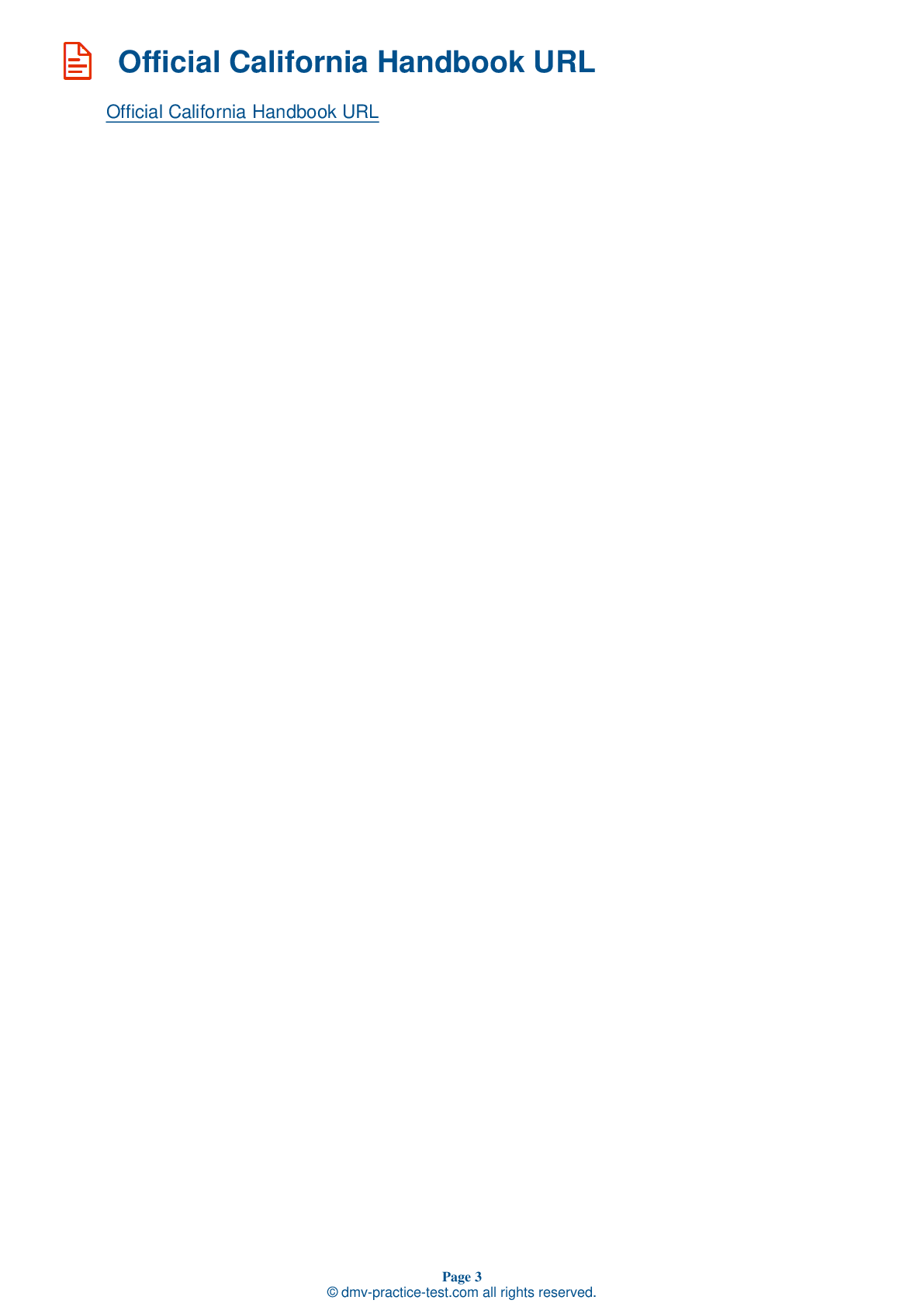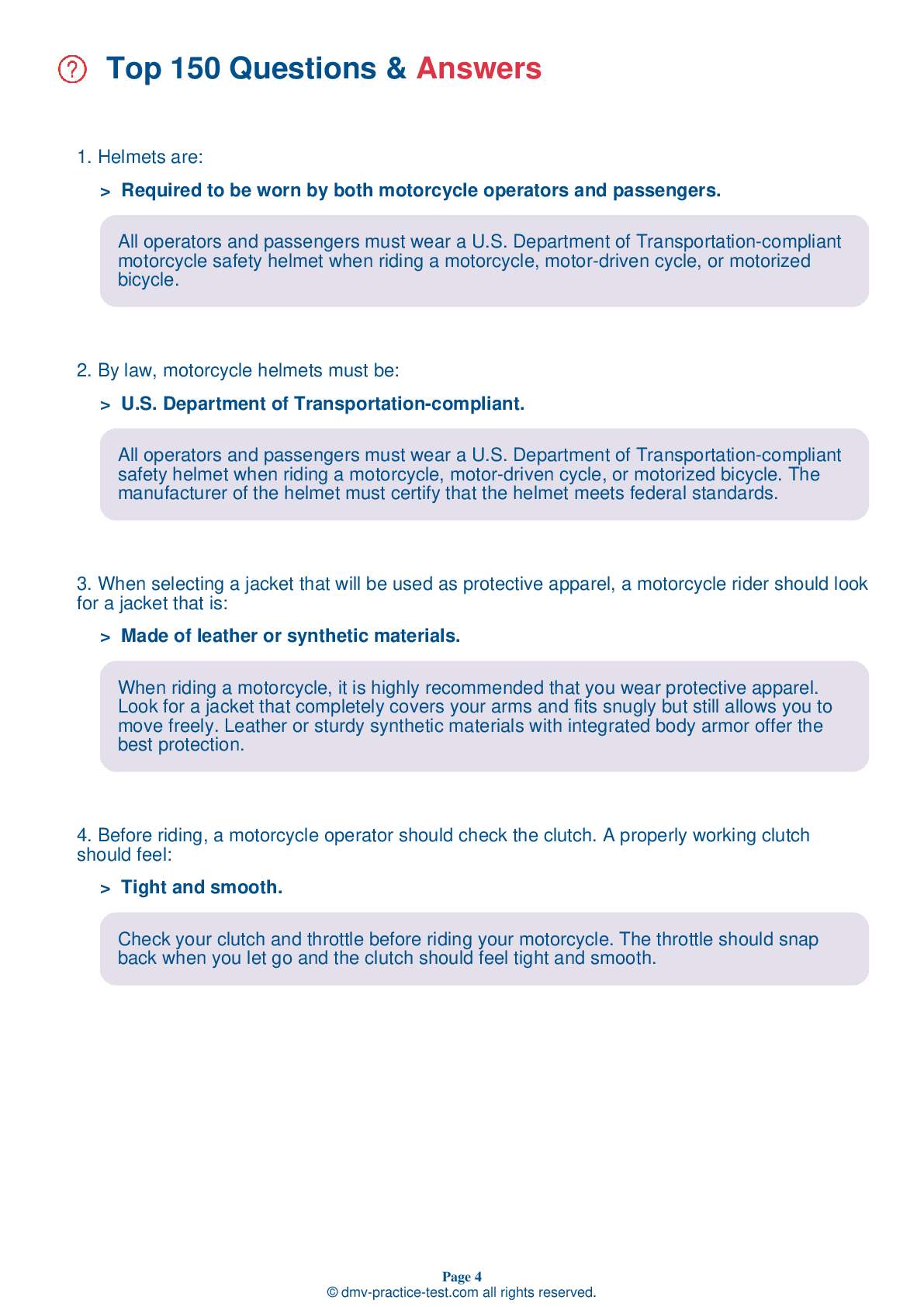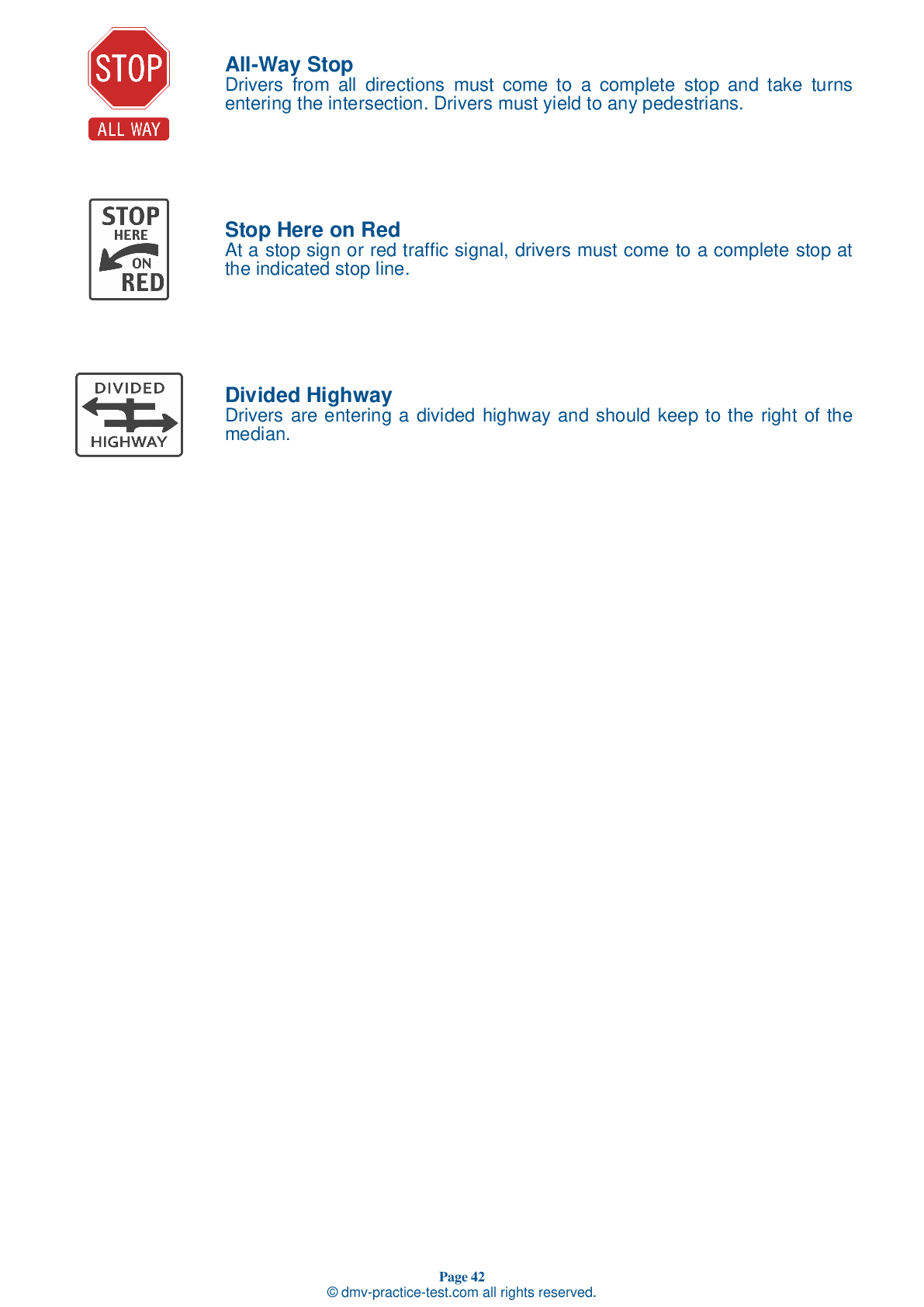DMV Permit Test #1
Motorcycle Test | License CA 2025 | FREE Online Practice! #1
Take this FREE motorcycle test (license in CA 2025) to check your knowledge of the road rules. To improve your results, download a motorcycle handbook online, study theory, and practice for free on our website. Still worried about how to get a motorcycle license in California in 2025? Check our website for more sample tests, train as much as possible, and boost your grades!
30
24
16
1 . When being passed, it is usually best for motorcyclists to be in which part of the lane?
If you are being passed either from behind or by an oncoming vehicle, stay in the center portion of your lane. Riding any closer to the passing driver could place you both in a hazardous situation.
2 . This road sign means:

This orange warning sign tells drivers that an area of roadwork is upcoming. When traveling through a work zone, stay alert for temporary traffic control devices.
3 . If your drive chain slips while you are riding, you should:
A drive belt or chain that slips or breaks while you are riding could lock the rear wheel and cause your motorcycle to skid. If the chain slips while you are riding, pull off the road and check the chain and sprockets. Tightening the chain may help. Replace the chain, sprockets, or both before riding again, if needed.
4 . Most motorcycle crashes occur:
Most motorcycle crashes happen in broad daylight. Wearing bright colors and reflective materials is always recommended when riding, even during the day.
5 . Drivers entering the road from an entrance ramp may not see you. To help drivers on an entrance ramp, you should:
Drivers entering a highway on an entrance ramp may not see you. Give plenty of room to entering vehicles by merging into another lane, if you can. If it is not possible to change lanes, adjust your speed to allow room for the vehicle to safely enter the highway.
6 . When should a rider increase their following distance?
A two-second following distance is recommended when riding under ideal conditions. Road users should increase their following distance any time conditions are less than perfect.
7 . An ideal lane position should:
A properly chosen lane position should provide a number of benefits, including an increased ability to see others and to be seen. It should help you avoid wind blasts, other drivers' blind spots, and surface hazards. Your lane position should discourage other drivers from trying to share your lane and provide you with an escape route, should a hazard arise.
8 . A passenger on a motorcycle should:
A passenger on a motorcycle should sit as far forward as possible without crowding the operator. The passenger should keep both feet on the footrests at all times, even when stopped.
Need Motorcycle Insurance? No problem!
Compare the best rates in California and find a personalized policy that meets your needs.
1. Are You Currently insured ?
2. Married ?
3. Do you own your Home?
4. Have you or a Family Member Honorably Served in U.S. Military ?
5. Your Name
6. Age
7. Zip code
Ranked by best match
2025 California | Frequently Asked Questions
In California, to acquire a motorcycle driver's license, you must first obtain a motorcycle learner's permit by passing a written test. After six months, or sooner if you're over 21, you can take the skills test to get your license. Alternatively, you can take a California Motorcyclist Safety Program training course, which can bypass the DMV's driving test.
In California, the minimum age to obtain a motorcycle driver's license (M1 or M2) is 16 years old. However, if you are under 21, you must also complete a state-approved motorcycle rider training course, and hold a motorcycle learner's permit for six months before you can get a full motorcycle license.
Yes, in California, you need a dedicated motorcycle license, known as an M1 license, to legally ride a motorcycle. This is separate from a standard driver's license. You can acquire it by passing both a written test and a skills test. If you're under 21, completion of a motorcycle rider training course is also required.
To apply for a motorcycle driver's license in California, you'll need the following documents: a completed application form, proof of identity (like a birth certificate or passport), proof of residency (like a utility bill or rental agreement), your social security number, and the appropriate fee. If you're under 21, you'll also need a certificate of completion from a motorcycle training course.
Yes, in California, you are required to take a written exam to obtain a motorcycle license. This test assesses your knowledge of motorcycle operation and laws. It is based on the information contained in the California Motorcycle Handbook. The exam includes questions about road rules and safe riding practices.
The motorcycle written test in California covers a range of subjects related to motorcycle safety and operation. These include understanding road signs and signals, rules of the road, safe riding techniques, handling dangerous surfaces, carrying passengers and cargo, and dealing with mechanical problems. The test is designed to ensure riders understand and can apply these concepts.
In California, if you're under 21, you must complete a motorcycle training course and cannot substitute it for the written test. However, if you're over 21, while the course is not mandatory, completing it could help you waive the motorcycle driving test. But the written knowledge test is still required for all applicants.
To enroll in a motorcycle training course in California, you first need to find a Motorcycle Safety Foundation (MSF) approved provider. You can do this online or by phone. Once you've chosen a provider, you'll need to register for the course, which usually involves filling out a form and paying a fee. The course typically includes classroom instruction and hands-on riding exercises.
No, you don't need to own a motorcycle to take the license test in California. You can use any street-legal, insured, and registered motorcycle for the test. If the motorcycle isn't registered in your name, you need written permission from the owner to use it for the test.
Yes, you can use a friend's motorcycle for the driver's license evaluation in California. However, the motorcycle must be street-legal, registered, and insured. You must also have written permission from the owner of the motorcycle to use it for the test if it is not registered in your name.
Yes, in California, the motorcycle driving test evaluates specific handling skills. These include your ability to start, accelerate, and stop smoothly, turn and change lanes properly, maintain a proper posture, make critical decisions and react to emergencies. You'll also be tested on how well you follow traffic rules and signals.
Yes, in California, new motorcycle drivers under the age of 21 must complete a motorcycle training course and have a learner's permit for six months before getting a motorcycle license. During this period, they cannot carry passengers, ride on freeways, or ride at night. After turning 21, these restrictions no longer apply.
Yes, your California motorcycle license is valid throughout the United States. However, you must abide by the specific traffic laws of each state you travel through. It's advisable to familiarize yourself with these laws before your trip. Some states may have different helmet laws or lane-sharing rules.
Yes, in California, it's mandatory for all motorcycle riders and passengers to wear a helmet that complies with the U.S. Department of Transportation's safety standards. This law applies regardless of the rider's age or experience level. Failure to comply can result in fines and penalties.
Yes, in California, there are two types of motorcycle licenses: the M1 and M2 license. The M1 license allows you to operate any two-wheeled motorcycle and all vehicles listed under Class M2. The M2 license allows you to operate any motorized bicycle, moped, or any bicycle with an attached motor.
Yes, in California, you can add supplementary endorsements to your motorcycle license. These endorsements allow you to operate additional types of vehicles beyond a standard motorcycle, such as three-wheeled motorcycles or mopeds. To add an endorsement, you typically need to pass a written and/or skills test related to the specific vehicle type.
Yes, the California Department of Motor Vehicles (DMV) offers the motorcycle license test in multiple languages. If English is not your first language, you can request to take the test in your native language. However, it's advised to contact your local DMV office in advance to ensure they offer the test in your preferred language.
To effectively prepare for the motorcycle license test in California, start by studying the California Motorcycle Handbook thoroughly. The handbook covers all the information needed for the test. Additionally, taking practice tests online can be beneficial, as they provide a feel of the actual exam. Also, consider enrolling in a motorcycle safety course for practical skills.
Yes, the motorcycle written exam in California can be taken in languages other than English. The California DMV offers the test in multiple languages to accommodate non-English speakers. However, it is recommended to contact your local DMV office ahead of time to ensure your preferred language is available.
If you don't pass the motorcycle written test in California, you're allowed to retake it. However, you must wait for at least one day before retaking the test. If you fail the test three times, you will be required to start the application process again, which includes paying all applicable fees.



